People & Art: Out of the Ordinary
Harvey Oxenberg seeks out the offbeat
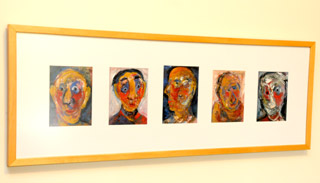

By Aaron Glickman
Photography by Manny Hernandez
Through the guidance of his cousin, an art school graduate who went on to work in museums and galleries, Harvey Oxenberg began collecting art two decades ago when he purchased a photograph by an emerging photographer named Bruce Weber. The piece captured the interaction between Brazilian lovers. From that starting point, Oxenberg amassed a sizable collection only to sell most of it off 12 years ago. He was no longer attracted to those artists and began to refresh the collection.
The current representation of Oxenberg’s collection is a well-curated assemblage of paintings, photographs and sculpture that envelopes his entire home. From Oxenberg’s front yard and into the foyer and hallways through the living room and into his office, bedroom and bathrooms, pieces are on display that share insight into this former seafood wholesaler turned art dealer (Oxenberg Fine Art) who lived the majority of his life on the north side of Miami-Dade county and now resides south in the lush surroundings of Coral Gables. The contemporary assortment of mostly living artists tells the story of a collector with a great sense for “out of the ordinary” works that mix the provocative with modern takes on classic works and pieces that carry personal relevance.
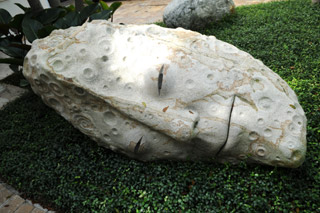
In his front yard, one is met with an ovular, stone sculpture of a human face. Sculpture is a recurring theme throughout the home and he identifies the medium as his favorite.
“I’m drawn to sculpture because of the three-dimensional effect,” he said. “You look at a painting, or a piece of art on the wall, and it is single dimensional. It can be beautiful, but a sculpture can be looked at from the left, from the right, from the back, from the front. It has a more interesting perspective.”
Several of Oxenberg’s sculptures are wonderfully captivating and certainly out of the ordinary. Hanging on the front wall of his home so that it can be seen from both the first and second floors is a piece by Rainer Lagemann, a Miami-based artist who creates metal sculptures of the human body from small steel squares that he welds together. The result, as displayed in Oxenberg’s collection, is an abstract, transparent interpretation of the human form in motion.
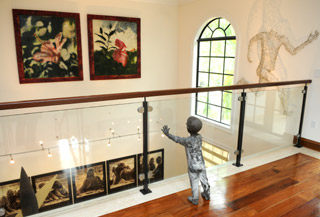
The human form is witnessed throughout the collection, and Oxenberg identifies the recurring theme as a point of emphasis. The theme is witnessed again in sculpture with a life-size, stone piece of a Chinaman holding his fist straight into the air. The work is by Wang Guangyi, a Chinese artist known as a leader of the ‘Political Pop Movement’. The piece has a Cold War era feeling and Oxenberg joked that it is his resident communist.
Human form is witnessed again with numerous sculptures and images of faces, each with a slant toward the offbeat.
A notable painting of Oxenberg’s that captures the human form in the abstract is by R. B. Kitaj and hangs just past the front door next to a small Botero. The piece is emblematic of Kitaj’s style. The British Pop artist (deceased) was known for his figurative paintings featuring areas of bright color and economic use of line and overlapping planes which makes his works resemble collages.
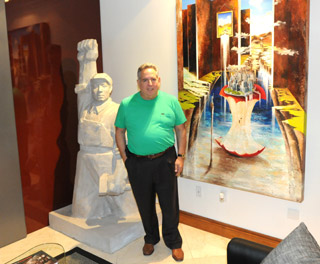
Also in the front of the house hangs a large scale five piece photo series by Andres Serrano entitled The Black Supper. This piece, an obvious take on The Last Supper, is a show stopper. Serrano considers himself to be a conceptual artist that uses no technical gimmicks or special effects. According to Oxenberg, Serrano created the series by painting statues black and submerging them in water. The result, when coupled with expert lighting and hundreds of air bubbles, is an eerie photographic interpretation of da Vinci’s legendary painting.
This modern take on classic work is another recurring theme in Oxenberg’s collection. Still Life, After Cezanne by Vik Muniz is a large scale photograph that was achieved by punching out little circles from magazine covers and assembling them in a manner that replicated a Cezanne still life and then capturing the image. Another piece by Muniz that hangs in Oxenberg’s stairwell is entitled Jacqueline, After Picasso and is a modern interpretation of Picasso’s muse and second wife, Jacqueline Roque.
In keeping with the modern take on classic themes is an artist displayed in Oxenberg’s bedroom, Manolo Valdés, a well-collected painter from Spain who is known for incorporating and appropriating traditional motifs and compositions of art history.
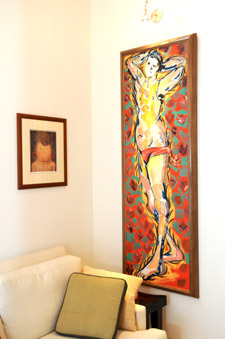
Oxenberg has also acquired a nice collection from the resident artists of the Bakehouse Art Complex in Wynwood, an organization for which Oxenberg is a past board president. Represented in his collection are the works of Mike Rivamonte, Pablo Cano (formally a Bakehouse artist), Jacqueline Roch, Maria Sonia Martin, Donna Lee Steffens, Marta Moreau and Anica Shpilberg.
From a hobby that led to his profession, contemporary art surrounds a large portion of Oxenberg’s life. His collection is fun and concentrates on pieces that require second and third looks due to the unique nature of their themes or compositions. The stories he tells exemplify his passion for his chosen pieces. By and large, he collects artists that he knows; and with his Miami roots – a graduate of Miami Norland Senior High – Oxenberg is yet another example of a Miami collector who has evolved artistically in conjunction with his hometown.
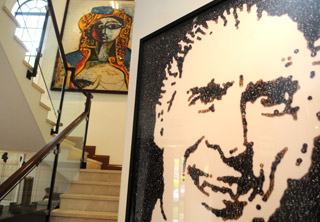
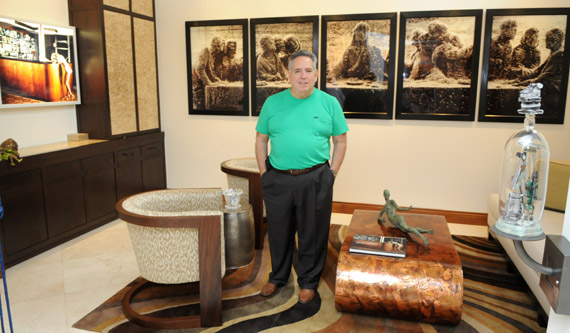
People and their Art is sponsored by Markowicz Fine Art, a contemporary art gallery that opened its doors in the Miami Design District at the initiative of Bernard Markowicz, ex-partner of Opera Gallery. While providing the perfect showcase for the works of the famous artists such as Andy Warhol, Tom Wesselmann, Picasso, Buffet, Miro, Braque and Chagall, Markowicz Fine Art also devotes itself, early on, to promoting new artistic French talent Alain Godon, Alexandra Gestin, Clara Poupel as well as Claude Charlier. Markowicz Fine Art also represents in Florida the Mourlot estate (original lithographs and lithographic posters from the great Masters).


